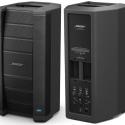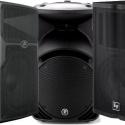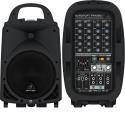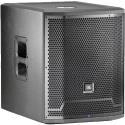Powered vs Passive Speakers: A Clear Explanation
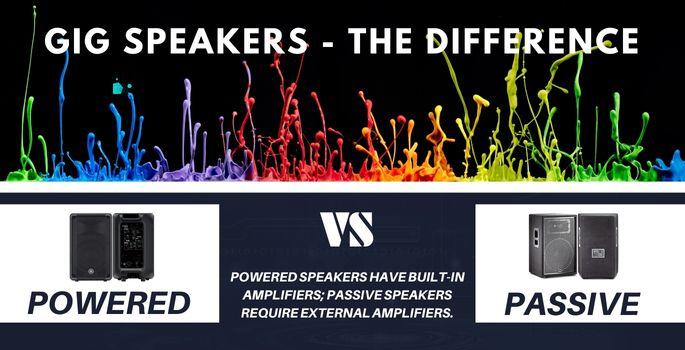
The terms active/powered and passive frequently appear when looking for loudspeakers or creating your designs for a speaker system.
Active speakers need power, whereas passive speakers don't. This is the fundamental distinction between powered and passive speakers. In addition, passive models require additional amplifiers. In contrast, powered models come with built-in amplifiers.
I'll go into more detail about the distinctions between powered vs passive speakers in this article. This will help you choose the best speaker type for you and your specific setup.
What Are Powered Speakers?
A speaker with an integrated amplifier is called an active speaker. Active speakers require a plug or battery to work. They are also frequently referred to as powered speakers. You can put your audio devices directly into them, and they can produce sound without needing any other devices.
Should You Use Powered Speakers?
There are various reasons why people decide whether they will use a powdered speaker in their setup. Keep these factors in mind when it comes to selecting a powered speaker setup.
Reasons To Choose Powered Speakers:
-
Sound Quality - These speakers will provide you with the best sound possible. This is has its own amplifier built-into the cabinet of the speaker. The amp is also selected to match the speaker best. Many of the FRFR speakers today are powered speakers, because manufacturers ought to control the amp section for a neutral sound.
-
Portable - Powered speakers are built to have a smaller enclosure. Despite some models being heavy, powered speakers can be a better option for traveling or if space is limited.
-
Simple - It is easy to install and use active speakers. All you need to do is link the speaker with your audio source. Bluetooth and Wi-Fi can also connect them.
Issues With Powered Speakers To Be Aware Of:
-
Limited - You are limited with these speakers in terms of customizability. This is because you cannot match speakers to amplifiers yourself.
-
Price - Active speakers often have a much higher price tag than passive speakers. Thus, if you are first starting, you might have to settle with lesser-quality speakers.
The convenience of having a built-in amplifier in the speaker cabinet made active speaker design the most prevalent in the market. It is used in surround sound systems, blutetooth speakers, and more.
What Are Passive Speakers?
A speaker that doesn't contain a built-in internal amplifier is known as a passive speaker. They have to be attached to an external amplifier for them to work. Furthermore, they don't need plugging in since the amplifier powers them.
You must link your audio device with the amplifier to use passive speakers. However, matching your passive speakers with the amplifier would be best. This is so you can achieve system compatibility to obtain a richer and fuller sound.
Are Passive Speakers The Best Choice?
It is essential you know the upsides and downsides of using passive speakers. This may help your own decision on whether you should use them.
Reasons To Choose Passive Speakers:
-
Customization - Passive speakers are ideal if you love to modify and upgrade your equipment. You can easily add components or a different separate amplifier to improve the sound quality. Passive speakers also have fewer external components. The speaker enclosures mainly house just the speaker, and you can swap them out easily with just a few tools.
-
Setting Up - Installing a passive speaker doesn't need to be plugged into a wall socket. Therefore, in your setup, there will be fewer cables to manage. Passive speaker setups also tend to be better as permanent fixtures in a venue since the power amplifier can be stationed in one location. This makes them easier to maintain as well.
-
Sizes - Many more sizes are available to you if you choose a passive speaker. Due to the range of sizes, you can use more speakers in one system to create a stronger and clearer sound. It's important to note that external amplifiers need to be matched with the speakers. Get amplifiers that have sufficient power handling for your setup.
Why You Should Be Cautious Of Passive Speakers:
-
Sound Quality - The sound quality results from the amplifier you have decided to use. You might not get the greatest sound quality from passive speakers if you mismatch them with the amp.
-
Portability - Passive loudspeakers aren't portable as they must be connected to a matching amplifier, which can add to the traveling weight.
-
Amplifier matching - You need to be aware of amplifier matching, impedance matching, and power handling when using a passive setup. Getting this wrong may result in damage to your equipment.
Don't Forget About Subwoofers
Subwoofers ("subs") are common speakers that handle very low-pitched sound frequencies. This includes bass and sub-bass, typically 20-200 Hz. This improves dynamics by relieving the main speakers from excess low frequencies. It also provides your audio with more punch.
Alongside this, it makes listening more engrossing. Subs are excellent for background music, studios, stadiums, concert halls, theaters, and more. They are a must for low-frequency instruments like kick drums or bass guitars.
Subwoofers are never intended to operate independently. Instead, they are meant to work with loudspeakers that handle higher-pitched frequencies. You need to use an active crossover network if you are going to use passive subwoofers with amplifiers. This ensures that the subs only get the frequencies they're supposed to reproduce. Subwoofers are available in powered and passive varieties, just like loudspeaker counterparts.
It would be best to link powered subwoofers to powered speakers or passive subwoofers to passive speakers. This is crucial to remember because many experts advise not to mix and match different types of subwoofers and speakers.
When Is It A Good Time To Use These Speakers?
The best speaker between active and passive speakers depends on the use. However, active speakers typically offer better value. Passive speakers are a better option if you want greater control over the sound.
Active speakers are the perfect choice if you want a turnkey system with dependable, high-quality sound you don't want to fiddle with. Passive speakers are more suited for club environments. Yet, powered speakers are the most suitable if you are looking for on-the-go music.
For home systems, the choice is really up to you. Since you can customize passive speakers more easily, they are often considered the better option. Although, you can still obtain great sounds from powered speakers.
Frequently Asked Questions
Powered vs Passive Speakers, Which One is Better?
This can vary depending on your needs. However, passive speakers provide more options to customize your sound system.
Can You Use Speakers Interchangeably?
A powered speaker already has internal amplifiers, so we don't advise interchanging them with passive speakers. All you have to do is plug active speakers into a power source, and they are ready to work. Passive speakers require an external amplifier, which is not needed by powered speakers.
Can Passive And Active Speakers Be Used Together?
Passive and active speakers cannot be used simultaneously with the same amplifier channel. As a result, you shouldn't connect the passive speaker you are using after your amplifier to a powered speaker.
What Type Of Speakers Are Subwoofers?
Subwoofers can be active, which has a built-in amplifier, or passive, which requires an amplifier. A crossover is necessary to control the frequencies sent to the subwoofer in either scenario.
An active subwoofer already has that built in. Sometimes, the amplifier needs to be changed to accommodate a passive subwoofer.
An active subwoofer can be more advantageous for your audio system than a passive one since it calls for fewer connections and is equipped with all the necessary internal processing.
Why Are Active Speakers Also Called Powered?
The reason active speakers are also referred to as powered is that the speaker must be plugged in. They have a built-in amplifier. Hence, they need power from a battery or plug socket to work.
Conclusion
Both active and passive speakers can produce great-sounding sound systems. The simple difference between active and passive speakers is that powered speakers contain built-in amplification. Hence, they are much more portable. In comparison, a passive speaker needs an external amplifier to work. For older speakers it is a good idea to carry out a speaker test periodically to make sure they are working well.
It is worth noting that you shouldn't mix and match passive and active speakers together. This is mainly because they have different requirements. If you want a more customized sound system, you may be better with passive speakers. But for reliability and simplicity, go for powered speakers.
Now you now know the difference between powered vs passive speakers. Check out our guide to the Best Powered PA speakers.



